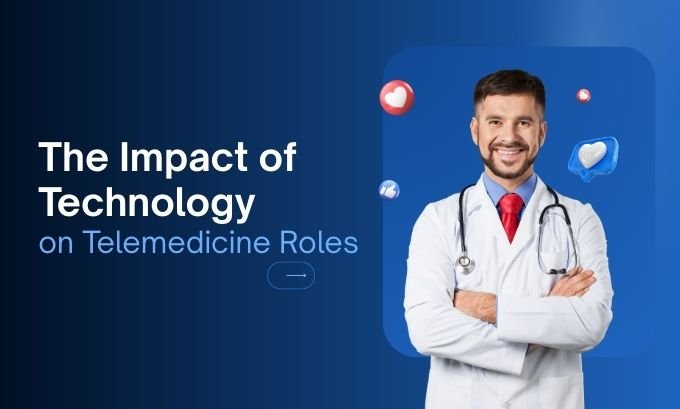Imagine seeing patients from your living room, setting your own hours, and reaching people who live hundreds of miles away. That’s not the future—it’s today. Telemedicine jobs for doctors are growing rapidly, reshaping healthcare while offering flexibility and freedom that traditional hospital jobs rarely provide.
The COVID-19 pandemic accelerated this shift, pushing healthcare systems to adopt virtual appointments and remote monitoring. Now, telemedicine is more than a trend—it’s a thriving market projected to surpass $460 billion globally by 2030. Patients want convenience, health systems want efficiency, and doctors are discovering new opportunities to provide meaningful care from anywhere.
Table of Contents
Why Telemedicine Jobs for Doctors Are Surging
Short answer: flexibility, reach, and efficiency.
Longer answer: more patients are seeking remote treatment, and healthcare systems are evolving. Doctors can now connect via telehealth platforms to provide care in real-time or asynchronously, sometimes aided by Artificial Intelligence (AI).
Key drivers include:
- Flexibility & Freedom: Work from home, choose your schedule, and balance family or personal commitments.
- Lower Stress: Telemedicine reduces time spent on paperwork and administrative tasks.
- Wider Patient Access: Reach rural, underserved, or mobility-limited populations, improving healthcare equity.
A Doctor’s Real-Life Experience in Telemedicine
I worked with a mental health startup providing care to college students. Our platform used secure video calls and integrated digital health records. My role involved first-time evaluations and follow-ups for medication management.
One standout feature was an AI assistant that transcribed sessions and highlighted key notes. I could review, edit, and finalize documentation efficiently, saving hours of paperwork each week.
The flexibility was remarkable. Some days I spoke with students across states; other weeks, I worked while traveling. This freedom allowed me to maintain high-quality care while enjoying personal life—something nearly impossible in a traditional hospital setting.
The Strengths of Telemedicine Work
- Work-Life Balance: Flexible hours and remote work options.
- Tech Support: Leading platforms provide training and IT assistance.
- Patient-Centered Care: Less paperwork, more face-to-face time (virtually).
- Specialization Opportunities: Focus on niches like dermatology, mental health, or chronic disease management.
- Expanding Access: Treat patients who otherwise might not receive care.
Challenges and Areas for Improvement
Telemedicine isn’t perfect. Doctors face unique hurdles, including:
- Limited Diagnostics: Virtual exams can’t replace in-person physical checks.
- Licensure Barriers: Multi-state practice requires multiple licenses, though the Interstate Medical Licensure Compact (IMLC) helps.
- Privacy Concerns: HIPAA compliance and secure networks are essential to protect patient data.
- Patient Connection: Building trust through a screen requires strong communication skills.
- Varied Compensation: Payment models differ widely—per visit, hourly, or salary—so understanding terms is crucial.

Types of Telemedicine Jobs for Doctors
1. Synchronous Telemedicine (Live Video)
Real-time virtual appointments for urgent care, primary care, and specialty services.
| Type | Examples | Use Case |
| Urgent Care | Teladoc, Amwell | Non-emergency issues like colds, flu, minor infections |
| Primary Care | Online clinics | Check-ups, chronic care, prevention |
| Specialty Care | Dermatology, Psychiatry | Targeted consultations and follow-ups |
2. Asynchronous Telemedicine (Store-and-Forward)
Patient information is sent to a doctor for later review—efficient and flexible.
- Dermatology: Photos of skin issues for remote evaluation.
- Teleradiology: Radiologists interpret X-rays, CTs, and MRIs remotely.
- Pathology: Digital slides analyzed from afar.
3. Remote Patient Monitoring (RPM)
Doctors track chronic disease management or post-surgery recovery using digital tools like glucose monitors, blood pressure cuffs, or wearable devices.
- High-risk pregnancy monitoring
- Early detection of complications
- AI-assisted trend analysis for preventive care
How Technology Shapes Telemedicine Roles
Artificial Intelligence (AI) plays a growing role in:
- Diagnosing conditions from images
- Auto-generating clinical notes
- Predictive analytics for chronic disease
- Chatbot triage to prioritize urgent care
Digital Health Monitoring empowers doctors with continuous patient insights, turning data into proactive care decisions.

Ensuring Patient Privacy and Data Security
Secure care is non-negotiable:
- HIPAA Compliance: Protects all virtual interactions.
- End-to-End Encryption: Safeguards video, messages, and records.
- Secure Internet: Doctors must use private, secure networks.
- Training: Telehealth companies educate staff on privacy best practices.
Frequently Asked Questions (FAQ)
1. How much can doctors earn in telemedicine?
Salaried roles: $180,000–$300,000+. Hourly: $100–$200 per consult.
2. Do I need special training?
No universal certification, but an active medical license is mandatory. Most platforms provide training and guidance on webside manner.
3. Can I practice telemedicine internationally?
Most U.S.-based platforms require doctors to live in the U.S. with state licenses. Some global platforms may have different requirements.
4. What equipment is required?
Computer with webcam/mic, secure internet, private workspace. Some companies provide devices.
5. How does malpractice insurance work?
Check your policy—some telehealth platforms provide coverage for services delivered on their platform.
6. Is telemedicine suitable for new doctors?
Typically best for doctors with 2–4 years post-residency experience due to independent decision-making requirements.
7. How did COVID-19 affect telemedicine jobs?
The pandemic accelerated adoption, relaxed regulations, and normalized virtual care, creating lasting demand.
Conclusion: A Promising Path Forward
Telemedicine jobs for doctors represent more than convenience—they’re reshaping healthcare itself. From live virtual visits to AI-assisted chronic disease management, opportunities are diverse and expanding.
However, success requires awareness: diagnostic limitations, licensure hurdles, and data privacy responsibilities cannot be overlooked. By understanding these challenges and leveraging technology effectively, doctors can build rewarding, sustainable careers while improving access to care for patients everywhere.
The future of medicine is not just in hospitals—it’s wherever patients and doctors can connect, safely and efficiently.
Author Bio
Dr. Evelyn Reed is a physician with over 15 years of experience in healthcare innovation. She has worked with startups to enhance telehealth platforms, integrating technology and patient-focused solutions. Dr. Reed writes about medicine, digital health, and patient privacy, helping professionals navigate the evolving landscape of care.
References
- Grand View Research. (2022). Telemedicine Market Report.
- American Medical Association (AMA). Telehealth Guide.
- Center for Connected Health Policy (CCHP). State Telehealth Laws.
- U.S. Department of Health & Human Services. HIPAA Health Privacy.

